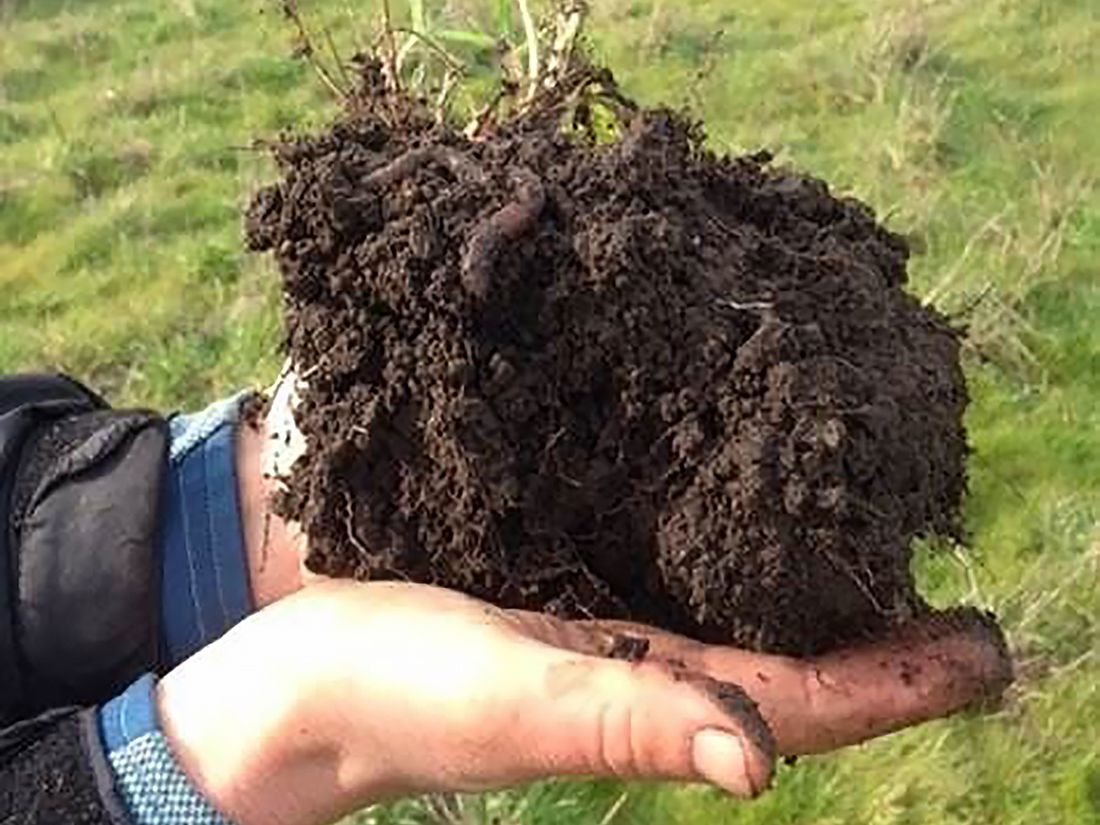Changes in Soil Carbon at TomKat Ranch and Beyond

By: Point Blue Conservation Science
Since 2011, Point Blue Conservation Science has worked at TomKat Ranch conducting rigorous, transparent scientific research in order to help advance what we know about regenerative agriculture. This includes improving our understanding of how grazing strategies and other management practices can help to promote soil and ecosystem health by focusing on a few basic principles.
To expand our learning network, in 2014 our team launched the Rangeland Monitoring Network (RMN), a program that now monitors ecological parameters on over 85 ranches in California. In 2018, we conducted our first resampling of rangeland soils through the RMN, returning to locations originally visited three years prior. At each of these locations, our scientists measured soil carbon, water infiltration, and bulk density—metrics that together tell us something about soil health and carbon sequestration.
During that time period (2015-18), on the tail end of California’s mega-drought, the Central Coast briefly experienced moderately moist conditions before returning back to drought conditions (see TomKat Ranch’s Ranch Data Weather Webpage). With this kind of extended drought, the expectation is that carbon inputs through photosynthesis will be less than carbon outputs via respiration, effectively decreasing soil carbon stocks over time. And in California’s semi-arid to arid climate, unlike more mesic climates that support ranches such as White Oak Pastures (a ranch that has reported remarkable rates of carbon sequestration), it may be hard to overcome these effects through even regeneratively-focused management.
As expected, we saw a modest average decline in soil carbon from 0-10 cm depth across the monitoring network, including at TomKat Ranch. However, TomKat’s deeper soils (10-40 cm depth) did not decline significantly from 2015-2018. We also observed that not all sampling locations in the network or on the ranch behaved the same way: in fact, 46% of the points monitored at TomKat Ranch gained soil carbon from either 0-10 cm, 10-40 cm, or both (see TomKat Ranch’s Ranch Data Soil Webpage). This means that despite the overarching drought conditions during our sampling period, some soils actually gained carbon. We are interested in, and actively working towards, understanding more about these points and how we can enable the conditions for carbon sequestration to occur in other locations.
What are the factors that may determine whether, and to what degree, soil carbon sequestration is occurring at a given site? Here are a few primary ones:
- Quality and quantity of organic matter entering the system, which is a function of plant community composition and forage productivity
- Microbial physiology, especially carbon use efficiency (i.e., the fraction of carbon that is incorporated into microbial biomass versus respired as CO2)
- Soil texture and mineralogy, which affects how strongly organic matter is held onto mineral surfaces
- Soil aggregation, which physically protects carbon from being lost as CO2
- Topography and (micro)climate
A keen observer may quickly realize that some of these factors—like plant community composition—can be influenced by management, while others—like soil mineralogy—can’t. As we at Point Blue and TomKat Ranch continue to dig into the data, our hope is that we can disentangle many of these factors and determine what role management can play in promoting carbon sequestration across California’s rangelands. In the meantime, California’s rangelands, which support—and are supported by—a three billion dollar cattle industry, continue to play an important role in providing not only economic opportunity for rural communities, but also habitat for wildlife and native plants, and in achieving the state’s climate mitigation goals through avoided conversion to other land use types (see here and here). Similarly, regenerative management (guided by the basic principles mentioned above) continues to play an important role in stewardship of these landscapes and the many benefits they provide for people and the planet.